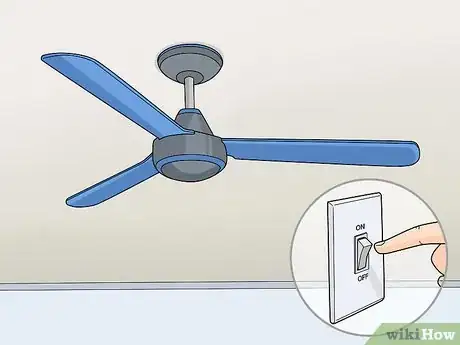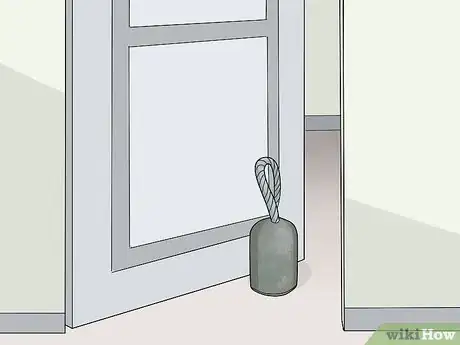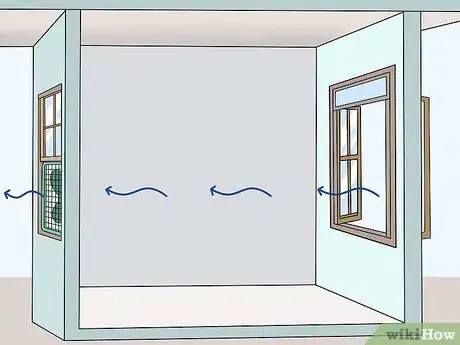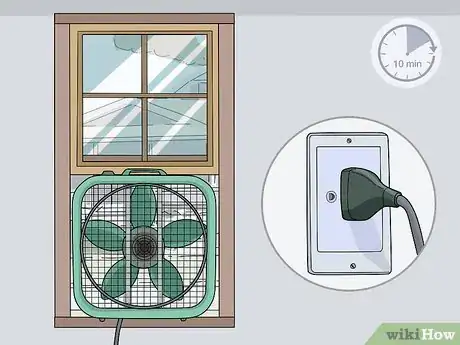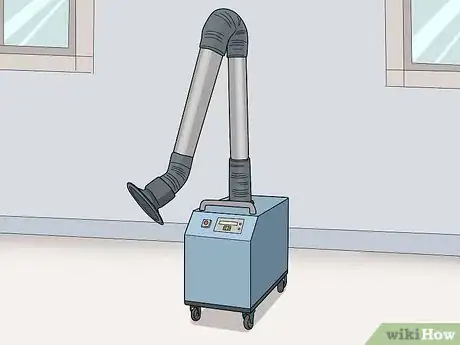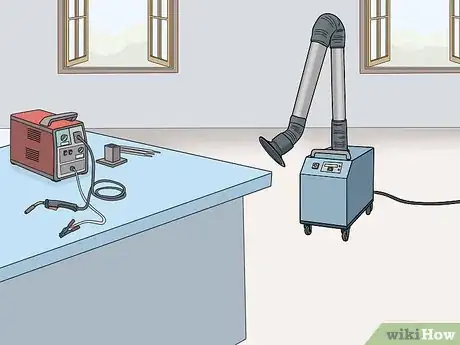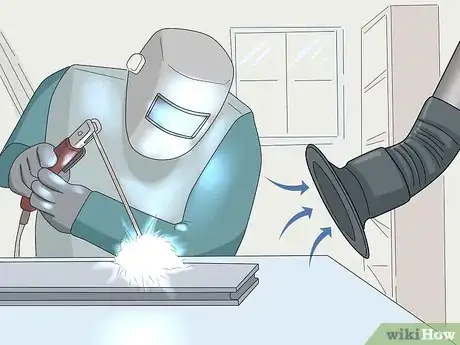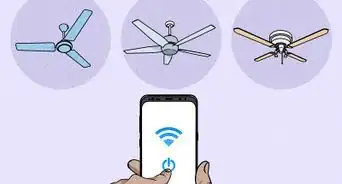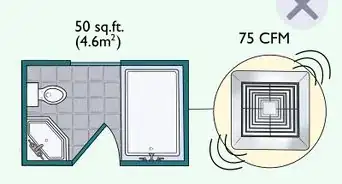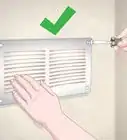This article was co-authored by wikiHow Staff. Our trained team of editors and researchers validate articles for accuracy and comprehensiveness. wikiHow's Content Management Team carefully monitors the work from our editorial staff to ensure that each article is backed by trusted research and meets our high quality standards.
There are 7 references cited in this article, which can be found at the bottom of the page.
This article has been viewed 6,775 times.
Learn more...
Setting up a well-ventilated area is important to create a safe working environment, especially if you’re working with products that put off noxious or toxic fumes. Fortunately, it’s pretty easy to set up a ventilated area. You can increase natural ventilation by using strategies such as opening up windows and creating a cross-ventilation effect to improve airflow and circulation. For projects such as welding or working with toxic substances that require more targeted ventilation, use a portable local exhaust ventilation system.
Steps
Increasing Natural Airflow
-
1Open up a window to allow fresh air to ventilate the area. Open a window in the room or area to allow wind and the differences in air pressure to drive outdoor air into the room to increase ventilation. If the room or area has multiple windows, open them all up for maximum natural ventilation.[1]
- Thermal buoyancy force is created by the differences in air density between the outdoor and indoor air and will circulate air throughout the area.
-
2Switch on fans to increase airflow in the room. Turn on any ceiling fans in the room to circulate the air. Create as much air movement as you can to disperse any potential contaminants so they can escape the room and keep the area well-ventilated.[2]
- Set up portable fans or box fans in the room if you don't have a ceiling fan.
- Keep the fans on the highest setting to have as much circulation as possible.
Advertisement -
3Prop open doors to improve the flow of air in the area. Open up any doors that lead into the area to allow fresh air from outside to flow in through them. Use doorstops to keep them propped open all of the way so air can continuously enter the area to increase the circulation.[3]
- Use a heavy item such as a chair or a brick if you don’t have a doorstop to prop the doors open.
Warning: If you’re working in a garage space or you don’t want the air from your work area to get into another part of the home or building, don’t prop open doors that lead into the building!
Creating Cross Ventilation
-
1Set up your work area halfway between 2 windows. Place your table, workbench, or work area at a point in the room that’s halfway between 2 windows across from each other. Put all of your tools, equipment, and gear in the area so you don’t have to move around when you’re working.[4]
- Placing your work area in the center of the cross ventilation will allow the moving air to ventilate your workspace.
Tip: If you don’t have 2 windows, then work halfway between a window and an exterior door.
-
2Place a box fan in an open window facing out. In an open window, set up a box fan and close the window onto the top of the fan to hold it in place. Plug the fan into a nearby outlet so it has power.[5]
- Use an extension cord to plug in your fan if you can’t reach a nearby outlet.
-
3Open up a window or door on the opposite side of the room. Once the fan is in place, open up a window or a door across from it. The fresh air will flow through the open door or window and pass out of the window with the box fan to ventilate the area.[6]
- Make sure the window or door is propped open so air can continuously flow through it.
-
4Turn on the fan for at least 10 minutes before you start to work. After you open up the door or window across from it, switch on the box fan. The fan will pull the air from the room and disperse it outside. Allow the fan to run for about 10 minutes before you start working to make sure the room is well-ventilated.[7]
Installing Local Exhaust Ventilation
-
1Choose a portable LEV system to set up in your work area. A portable local exhaust ventilation system (LEV) is an exhaust system that pulls air out of the room and discharges it outside to keep the area ventilated. They’re equipped with smaller hoses, similar to those found on a standard vacuum cleaner and they’re small and light enough to be moved around your work area.[8]
- Portable LEV systems cost between $1,200 and $3,000.
- Other exhaust systems must be installed by professionals in order to be installed correctly and to be in compliance with building codes.
- Portable LEV systems are also sometimes called “weld fume extractors.”
- You can purchase portable LEV systems at welding supply stores and online.
-
2Place the portable LEV system near your work area and plug it in. Set the system on level ground in a location near where you plan to work, but out of your way so you won’t trip over it. Plug the system into a nearby outlet once you’ve positioned it near your work area.[9]
- Don’t cover the unit or place it directly against a wall to keep it from overheating.
Tip: If you can’t reach a nearby outlet, or if there isn’t one in the room, use an extension cord to plug your LEV system into another outlet.
-
3Set the extraction hose as close as possible to your work area. The end of the extraction hose will have a small, vented hood. Point the hood in the direction of your work area and place it as close as possible to your equipment, without it getting in your way. [10]
- The closer you can place it, the better it will be able to capture contaminants so they don’t mix with the rest of the air in the room.
-
4Turn on the LEV system when you start working. Locate the power switch on the LEV unit. Whenever you plan to start working, or whenever you want to be sure the room is well-ventilated, switch on the LEV system. The vent hood will start pulling air into it to remove contaminants and keep the area ventilated.[11]
- Turn off the system once you're finished.
References
- ↑ https://www.ncbi.nlm.nih.gov/books/NBK143277/
- ↑ https://www.ncbi.nlm.nih.gov/books/NBK143277/
- ↑ https://www.ccohs.ca/oshanswers/safety_haz/welding/ventilation.html
- ↑ https://www.thisoldhouse.com/more/ventilating-workspace
- ↑ https://www.thisoldhouse.com/more/ventilating-workspace
- ↑ https://www.nrel.gov/docs/fy01osti/29513.pdf
- ↑ https://www.thisoldhouse.com/more/ventilating-workspace
- ↑ http://elcosh.org/document/3911/d001348/selection-of-commercially-available-portable-local-exhaust-ventilation-to-be-evaluated-for-effectiveness-in-controlling-worker-exposures-to-welding-fumes-in-construction.html
- ↑ https://youtu.be/xwaFEkvwHok?t=143

